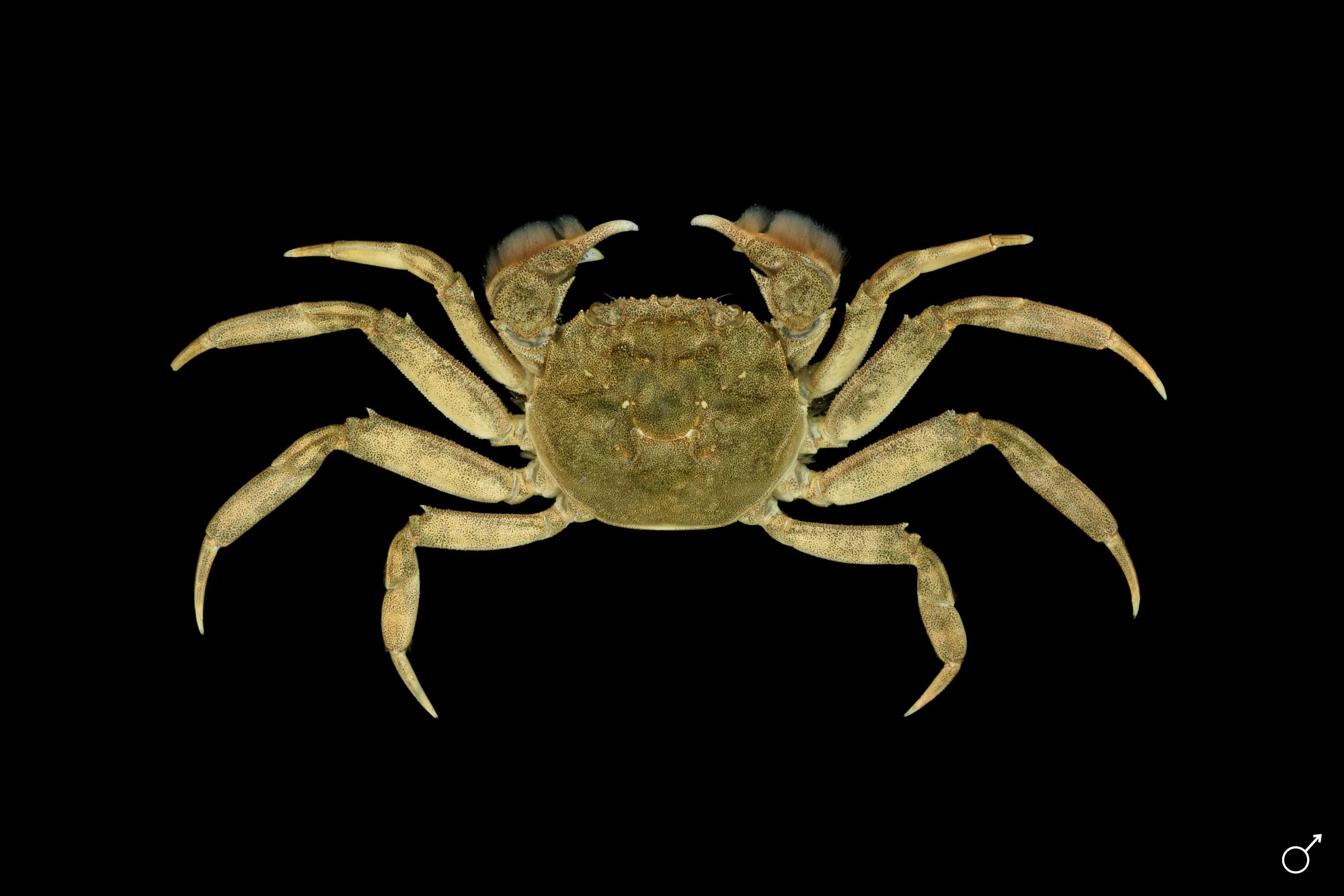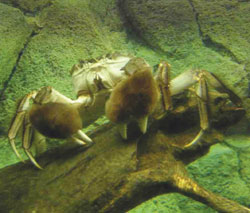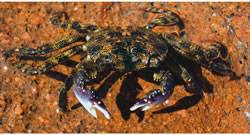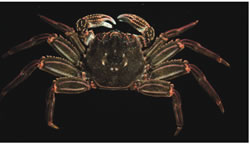Chinese mitten crab
The Chinese mitten crab is in the top 100 of “Worlds Worst Invaders” list. It is identifiable by the 4 spines either side of the eyes, and the large claws with white tips. It is known to occur in both marine and freshwater environments at different life stages so has a broad range of potential impacts.
It is an opportunistic feeder that can out-compete native species. It can tolerate a wide range of temperatures and modified habitats. It is capable of forming dense colonies that can cause erosion by intense burrowing. This species has had serious impacts in some European and American river systems.
The Chinese Mitten Crab is listed as prohibited matter under the NSW Biosecurity Act 2015 and is considered a major threat to native fauna and the environment. It may not be brought into NSW or released or allowed to escape into any waters in NSW.
Reporting
If you think you have seen a Chinese mitten crab in NSW, please take several high resolution photos or collect a sample and freeze in a plastic bag and report your sighting. For identification photos should show:
- Claws and spines either side of eyes
- Crab size - please include something for reference
- Shell colour and markings
Identification

Chinese mitten crab / Eriocheir sinensis
Key features:
- Large claws with white tips and light brown bristles that resemble "mittens"
- 4 spines either side of the eyes
- Smooth shell up to 8cm wide
Known locations:
- Tolerates a wide range of temperatures and modified habitats
- Prefers estuarine and coastal areas including lakes, wetlands and river banks
Habitat:

- Tolerates a wide range of temperatures and modified habitats
- Prefers estuarine and coastal areas including lakes, wetlands and river banks
Impacts:
- Forms dense colonies that cause erosion by intense burrowing
- Opportunistic diet, out competes native species
- Can carry lung fluke that can infect humans
Similar native species
These native species may be confused with this marine pest.
Swift-footed crab (Leptograpsus variegatus)

Key features:
- Dark-olive green to dark purple
Shell up to 8cm wide - Purple claws with white tips
- Three spines on either side of eyes
Habitat:
- Exposed rocky shores, intertidal
Red bait crab (Plagusia chabrus)

Key features:
- Hairy body and legs with spines on legs
- Red/brown/orange colour
- Shell up to 7cm wide
- Deeply notched between the eyes
Habitat:
- Prefers subtidal reefs up to 8m depth